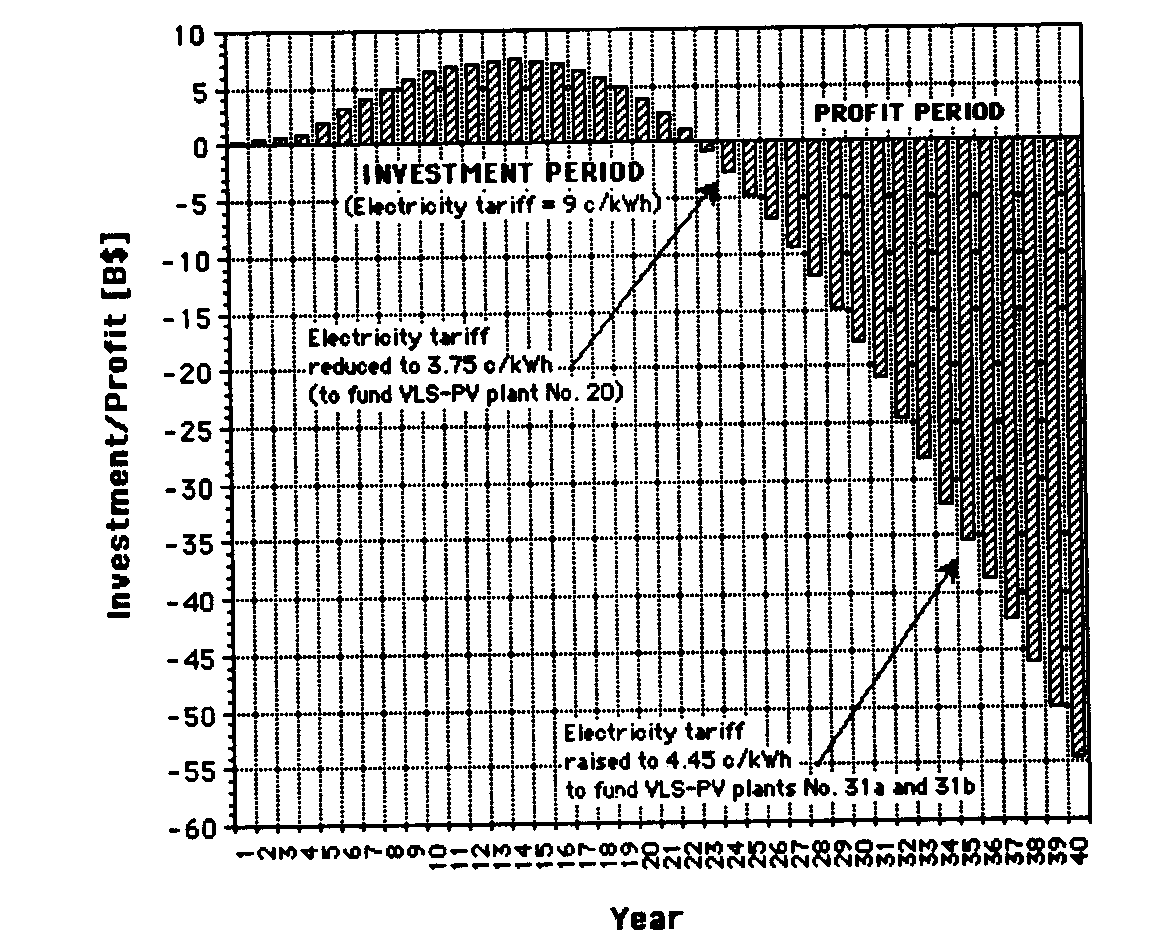 David (pointing to a mirror) and myself below the concentrator.
David (pointing to a mirror) and myself below the concentrator.215) Technology -- solar versus cold fusion
Ludwik Kowalski (5/3/05)
Department of Mathematical Sciences
Montclair State University, Upper Montclair, NJ, 07043
After spending a day at Energetics Technologies (see item #213) I had a chance of visiting Jacob Blaustein Institute of Desert
Research (Israel). It is located at the Sede Boker campus of Ben-Gurion University. This visit made me think about differences
between applications-oriented research in the field of solar energy and in the field of cold fusion. In the former case research
is based on science, in the later case it is based on protoscience. Not a single cold fusion application has been commercially
successful, so far, while progress in the area of solar energy has been enormous. Will practical applications of cold fusion start
to appear after the field becomes scientific? I hope so. But for the time being emphasis must be on science, not on technology.
I am particularly impressed by recently published roadmaps for implementations of photovoltaic (PV) technology in different
countries, as described in
<http://www.epia.org/05Publications/OtherRoadmaps.htm>
They indicate that solar batteries are likely to become dominant suppliers of all our electric needs, including industry, before
the end of this century. The American roadmap, entitled “Our Solar Future,” is downloadable as:
<http://www.seia.org/media/pdfs/pvroadmap.pdf>
 David (pointing to a mirror) and myself below the concentrator.
David (pointing to a mirror) and myself below the concentrator.
According to Dr. David Fainman, the director of the Israeli solar research center at Sede Boger Campus, the problems of implementation
are no longer technological; they are primarily financial. He gave me the preprint of a paper to be presented at the International
Conference on Solar Concentrators for Generation of Electricity or Hydrogen. That invited paper describes a proposed financial model
for a country like Israel. I am sure that this paper will be available over the Internet after the conference (May 1-5, Scotsdale,
AZ, USA).
Solar concentrators, by the way, are computer-controlled reflectors that focus solar radiation. A photovoltaic panel, receiving
concentrated radiation, is a set of solar batteries. I wish I had time to ask technical questions after the brief description of
the financial model. One of my questions would be about the need of cooling. To keep the cells cool one must constantly remove a lot
of heat. This would probably not be necessary if inexpensive mirrors were replaced by very expensive batteries of cells.
According to the model used by Fainman, the CPV (concentrated photovoltaic) technology will pay off the expenses, and will generate profits, after
23 years. This is illustrated in the figure below.

http://www.eia.doe.gov/cneaf/solar.renewables/renewable.energy.annual/backgrnd/chap11i.htm http://www.fsec.ucf.edu/pvt/pvbasics/index.htm http://www.sandia.gov/pv/ http://www.fsec.ucf.edu/pvt/ http://64.243.182.248/includes/pv%20tutorial.pdfThe main point is that solar electricity is already a practical reality on a small scale, and that it is likely to become a dominant source of electricity in many countries. That is good; fossil fuels will soon be too expensive to compete with solar energy. Dreams about abundant, and pollution-free (?), energy seem to be turning into reality. Yes, scientific and practically-oriented research, in the area of solar energy, were initially subsidized (and are still subsidized) by governments and private agencies. But subsidies would not materialize if experimental results were irreproducible, as they still are in the areas of cold fusion.